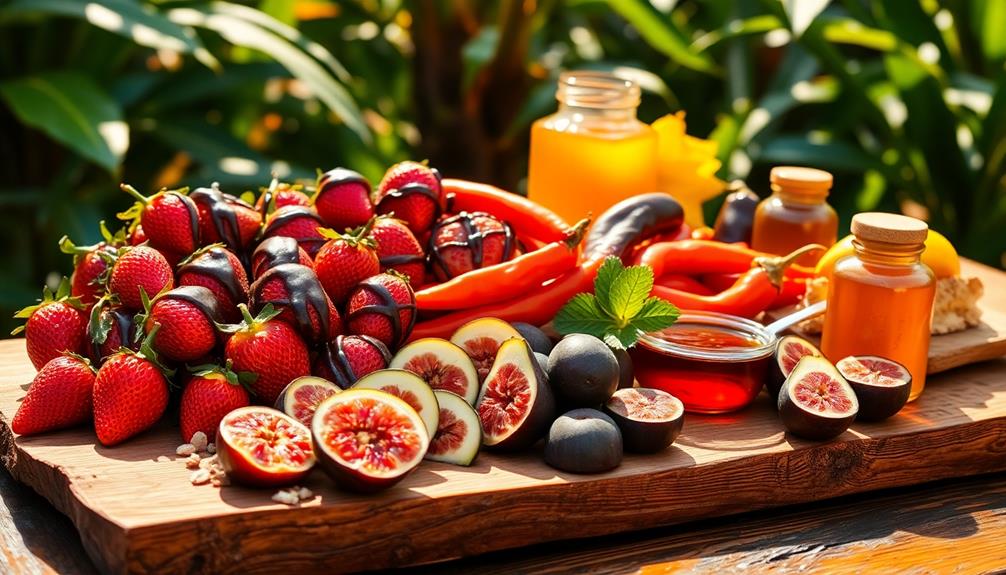Urban noise pollution can really change how you enjoy dining out. It affects your ability to converse and even distorts how you perceive flavors. If you're in a loud environment, you might find yourself drinking more alcohol to cope with the noise. High noise levels can lead to anxiety and frustration, pushing you to choose restaurants that are quieter and more serene. When you're sensitive to noise, you'll likely seek out early reservations or specific tables that offer relief. Discovering how to navigate these noisy spaces can enhance your dining experience considerably, and there's much more to explore on this topic.
Key Takeaways
- Urban noise pollution can impair taste perception, altering flavors and diminishing the overall dining experience.
- High noise levels often lead to increased alcohol consumption as patrons seek to cope with the chaotic environment.
- Diners may choose to eat at quieter venues, impacting restaurant selection based on personal noise sensitivity.
- Excessive noise can contribute to heightened anxiety and annoyance, affecting overall meal enjoyment and satisfaction.
- Cultural perceptions of noise influence dining habits, with some preferring lively atmospheres while others seek tranquility.
Impact of Noise on Dining
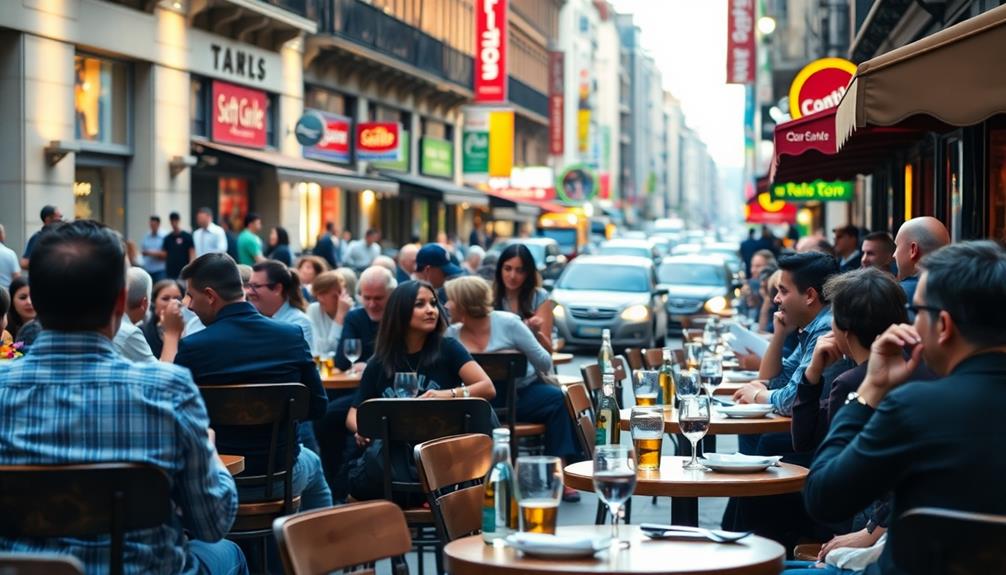
Excessive noise in restaurants can greatly impact your dining experience. When background noise exceeds 80 decibels, it becomes increasingly difficult for you to engage in conversation without raising your voice. This constant struggle to communicate can lead to frustration, overshadowing the enjoyment of your meal.
For instance, savoring dishes like Red-Braised Pork Belly may be diminished in a loud environment, as the rich flavors can become lost amidst the clamor. Studies have shown that loud environments can even impair your ability to taste, making it harder to detect flavors like sweetness and saltiness in your food and drinks.
Moreover, you might find yourself consuming more alcohol in these louder settings, with drinking rates markedly increasing as noise levels rise. If you're more sensitive to noise, you might experience heightened anxiety and annoyance, further detracting from your overall experience.
Prolonged exposure to high noise levels can also lead to negative health outcomes, such as fatigue.
In restaurants, the impact of noise extends beyond mere distraction; it affects your enjoyment and how you perceive your meal. So, next time you're choosing a place to dine, consider how the noise level might influence your experience. A quieter environment could make all the difference in how much you savor your time out.
Historical Trends in Restaurant Noise

How did restaurant noise levels escalate over the years? The trend began in the late 1990s, largely due to chef Mario Batali's innovative approach. He introduced loud music, creating a vibrant atmosphere that many believed enhanced the dining experience. Following his lead, chefs like David Chang embraced similar environments, prioritizing liveliness over quietude.
A New York Times investigation revealed alarming statistics: one-third of restaurants had noise levels that exceeded comfortable thresholds for conversation. Despite diners' complaints, many establishments opted for higher noise levels, hoping to boost table turnover and encourage quicker drinking.
The table below summarizes key factors influencing restaurant noise trends:
| Factor | Description | Impact |
|---|---|---|
| Chef Influence | Prominent chefs favored loud environments | Increased noise levels |
| Profit Motive | Higher noise encourages faster dining | Prioritized over comfort |
| Health Concerns | Excessive noise linked to hearing loss | Top complaint among diners |
As you dine out, keep in mind how restaurant noise has transformed your experience, with background noise often overshadowing conversation and enjoyment.
Acoustic Challenges in Design
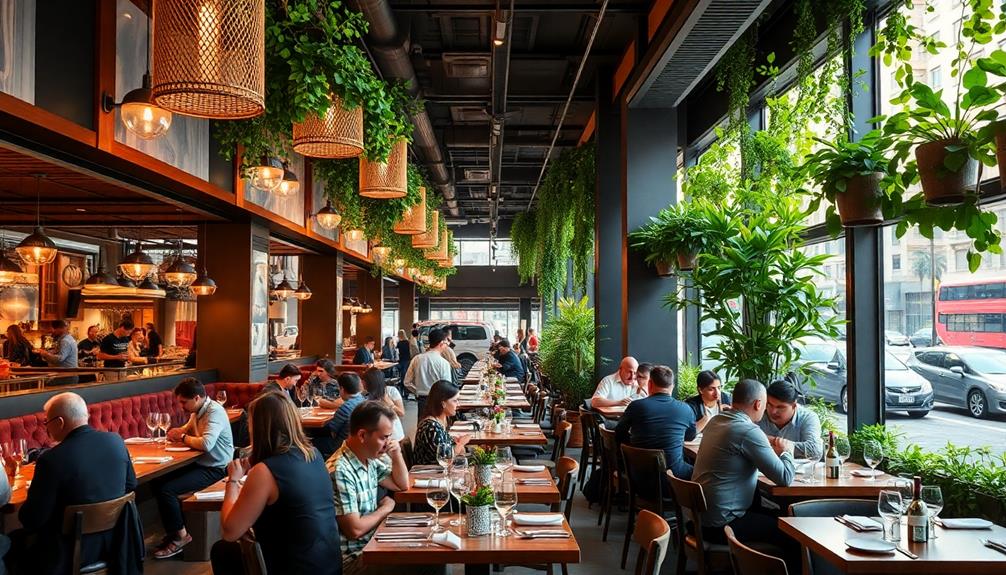
When designing a restaurant, you've got to take into account how materials impact sound. Hard surfaces like concrete and glass can create a noisy environment that makes conversation difficult.
Incorporating softer materials and strategic layout choices can help mitigate these issues, allowing diners to enjoy their meals and each other's company without distraction. By prioritizing acoustical design from the start, you can enhance your guests' dining experience and avoid costly retrofits later on.
Additionally, focusing on a menu that celebrates seasonal ingredients, like Nettle and Potato Soup, can further elevate the overall dining atmosphere.
Acoustical Design Considerations
Designing a restaurant with acoustics in mind can make a significant difference in the overall dining experience. When you ignore acoustics, excessive noise levels can spoil conversations and diminish enjoyment.
To guarantee a pleasant ambiance, consider the following acoustical design considerations:
- Hire Acoustic Consultants: While it might seem costly—potentially exceeding $50,000—investing in experts can help you manage sound challenges effectively. Creating a comfortable atmosphere can enhance the enjoyment of American diner classics like loaded baked potatoes and chicken wings.
- Utilize Sound-Absorbing Materials: Incorporate panels, carpets, and other materials that reduce noise levels, similar to successful designs like Union Square Cafe.
- Minimize Reflective Surfaces: Avoid using too many concrete and metal surfaces, as they can amplify sound waves and complicate the acoustical environment.
- Leverage Professional Tools: Use software like Odeon Room Acoustics to model sound propagation in your restaurant, helping you balance aesthetics and acoustic comfort.
Material Selection Challenges
Selecting the right materials for a restaurant can be a challenging task, especially when balancing aesthetics with the need for sound control. You might prioritize stylish finishes, yet these hard surfaces—like concrete, metal, and glass—can amplify noise, detracting from the dining experience.
Instead, effective material selection requires incorporating sound-absorbing materials that enhance acoustic performance.
However, this often comes at a price. Custom acoustical finishes can push initial construction costs beyond $50,000, which might feel overwhelming. It's crucial to integrate sound-dampening solutions, like foam or fiberglass, without compromising the restaurant's visual appeal. This means you'll need to think creatively about how to blend these materials into your design.
Moreover, the complexity of achieving good acoustics demands early collaboration with acoustical engineers. Too often, sound treatment is neglected until construction is underway, leaving you scrambling for solutions.
If your restaurant occupies a former church, you'll face unique challenges due to its design, which was intended for sound reflection. By carefully considering material selection and sound-absorbing options, you can create a welcoming environment that enhances your patrons' dining experience while maintaining an attractive aesthetic.
Effective Noise Management Solutions
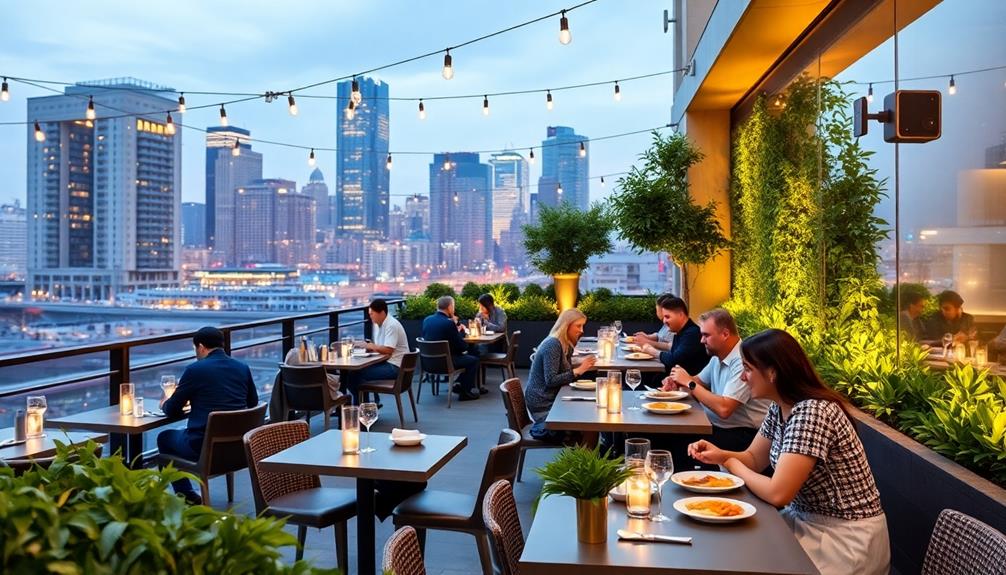
To create a comfortable dining experience, you need effective noise management solutions.
By implementing acoustic treatment strategies and regularly monitoring noise levels, you can greatly enhance your restaurant's atmosphere.
Design innovations, like sound-absorbing materials, also play an essential role in minimizing urban noise pollution.
Acoustic Treatment Strategies
While urban noise pollution can be a challenge for restaurants, effective acoustic treatment strategies can transform the dining atmosphere into a more enjoyable experience.
By investing in sound-absorbing materials and consulting with professionals, you can create a more inviting environment. Here are four strategies to contemplate:
- Acoustic Panels: Install acoustic panels made from sound-absorbing materials to greatly reduce noise levels and enhance conversation clarity.
- Sound-Absorbing Carpets: Incorporate thick carpets to further dampen sound, making the dining area feel cozier and more comfortable for guests.
- Engage Acoustic Consultants: Collaborate with acoustic consultants during the design phase to integrate sound treatment strategies that address potential noise issues early on.
- Hollow Metal Panels: Use hollow metal panels tuned for specific sound frequencies to effectively channel and dampen sound waves, improving overall acoustics.
Monitoring Noise Levels
Monitoring noise levels in restaurants is crucial for creating a comfortable dining experience. By utilizing decibel meter apps like SoundPrint, you can easily check the noise levels in various eateries, helping you choose places that prioritize acoustic comfort.
This proactive approach not only enhances your dining experience but also encourages restaurants to pay attention to their sound environments.
Investing in sound-absorbing materials—think carpets and acoustic panels—can greatly reduce noise levels, making your meal more enjoyable. As a diner, your feedback is essential; sharing your thoughts on noise levels with restaurant management can foster a culture of awareness and prompt improvements in acoustic design.
Regularly evaluating ambient sound levels and making adjustments based on customer feedback can help restaurateurs enhance the overall atmosphere, leading to improved customer retention and satisfaction.
Additionally, innovative solutions, like hollow metal panels tuned for specific sound frequencies, can effectively manage noise, ensuring a pleasant dining experience.
Design Innovations in Restaurants
As diners increasingly seek enjoyable experiences, restaurants must embrace design innovations that effectively manage noise levels. By prioritizing acoustic comfort, establishments can create inviting environments that enhance the dining experience.
Here are some effective strategies to contemplate:
- Sound-Absorbing Materials: Incorporating carpets and acoustic panels can greatly reduce ambient sound levels, making conversations easier and more enjoyable.
- Consulting Acoustic Experts: Hiring acoustic consultants during the design phase can lead to tailored solutions that align aesthetic goals with effective sound control, despite potential initial costs.
- Innovative Design Features: Using hollow metal panels tuned to specific sound frequencies can improve overall acoustic quality, ensuring that the restaurant feels lively without overwhelming noise.
- Reintroducing Classic Elements: High-end restaurants are bringing back sound-absorbing features like tablecloths and carpets, reflecting a trend towards prioritizing quieter dining experiences.
Strategies for Dining in Loud Spaces
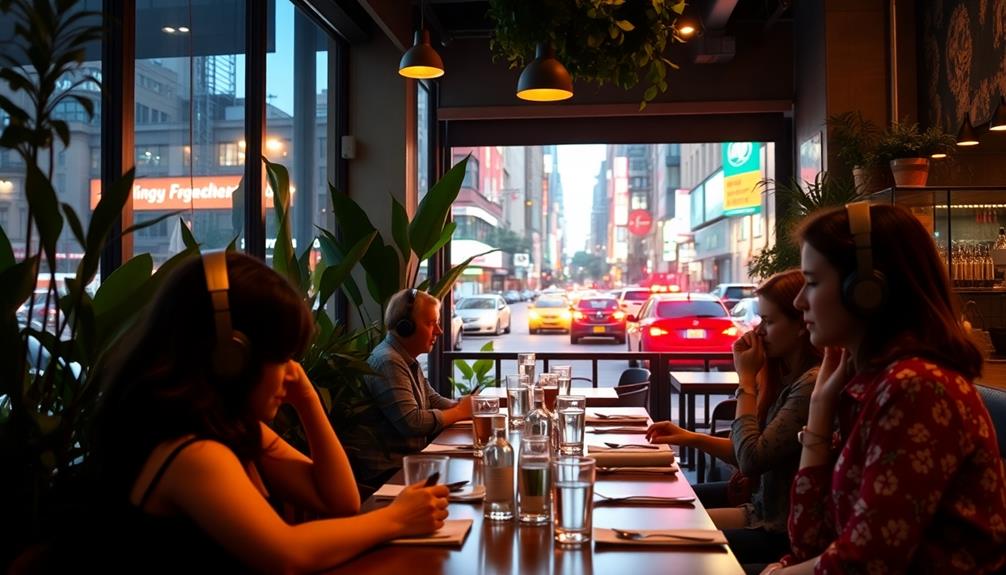
Dining in noisy environments can be a challenge, but there are effective strategies to enhance your experience. One of the simplest ways is to dine early in the evening. Noise levels tend to rise during peak hours, so arriving before the rush can provide a quieter atmosphere.
If you're planning a visit, consider making an advanced reservation and request a quieter table. This small step can greatly improve your dining experience.
Utilizing decibel meter apps is another smart strategy. These apps help you assess the noise levels of restaurants before you enter, guiding you toward quieter venues.
Being aware of your noise sensitivity is essential too. Opt for restaurants known for their serene environments to reduce stress while you eat.
Don't hesitate to voice your concerns about excessive noise to restaurant management. Your feedback can prompt them to make changes that improve the dining experience for everyone.
Cultural Influences on Noise Perception

Noise perception in dining environments is heavily influenced by cultural backgrounds. When you step into a restaurant, your experience can vary greatly based on the cultural influences that shape your expectations and behaviors.
For example, consider these factors:
- Communication Styles: In cultures like the United States, louder conversation is often the norm. This can lead to higher ambient noise levels compared to cultures that value subdued communication.
- Perception of Vibrancy: Some cultures associate bustling environments with a lively dining experience, while others prefer tranquility, impacting how noise is tolerated.
- Media Influence: American television often portrays louder communication as socially acceptable, shaping norms around noise perception in dining settings.
- Personality Traits: Individuals with higher Neuroticism may be more sensitive to noise, affecting their experience and tolerance in various cultural contexts.
Understanding these cultural influences helps you navigate the noise levels in restaurants and adjust your expectations.
Whether you thrive in a lively atmosphere or seek a quiet meal, recognizing the role of cultural background in noise perception can enhance your dining experience.
Future Directions in Acoustic Design
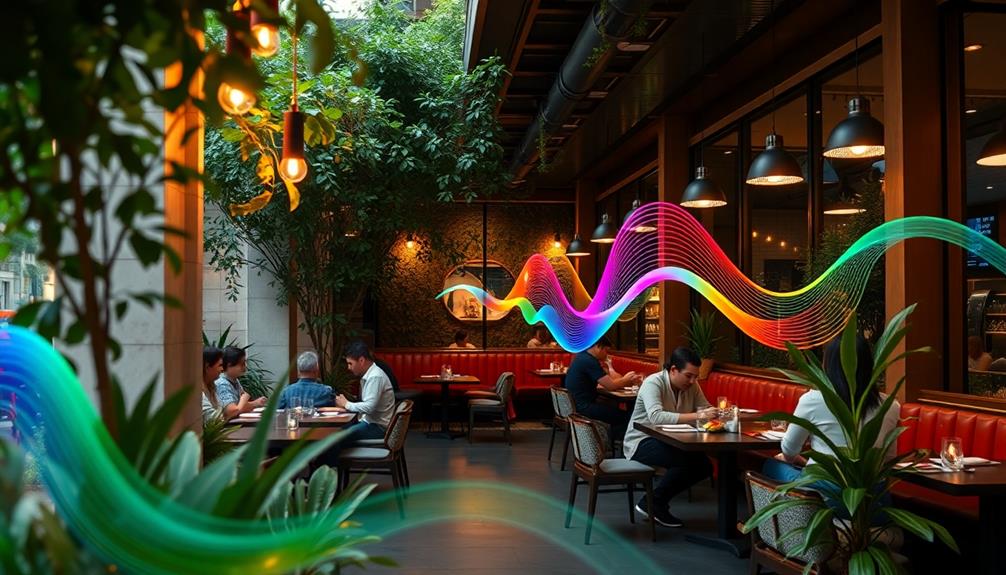
In the coming years, acoustic design in restaurants is set to transform notably, prioritizing not just aesthetics but also the auditory experience of diners.
You'll notice an increased emphasis on sound-absorbing materials, like carpets and specialized panels, aimed at creating quieter dining environments. This shift will enhance overall customer satisfaction, making your meal more enjoyable.
Incorporating acoustic consultants from the very start of a restaurant's design process can lead to effective noise reduction strategies.
They'll identify potential noise issues before they escalate, ensuring a more pleasant atmosphere. High-end establishments are even reintroducing traditional sound-absorbing features such as tablecloths and thick drapery, which greatly contribute to lowering noise levels.
Moreover, technology will play an essential role in monitoring sound.
With decibel meter apps at their disposal, managers can track and maintain acceptable noise levels, ultimately fostering a more comfortable dining experience.
Innovative solutions, like hollow metal panels tuned for specific sound frequencies, promise to dramatically improve sound quality in dining spaces.
As these advancements unfold, you can expect dining experiences that aren't only visually appealing but acoustically harmonious as well.
Frequently Asked Questions
What Are the Effects of Urban Noise Pollution?
Urban noise pollution can heighten your stress levels, disrupt sleep, and impair concentration. You might find it harder to enjoy your meals, leading to a less satisfying dining experience that affects your overall well-being.
How Does the Sounds Influence the Ambience of the Restaurant?
Did you know noise levels in restaurants often exceed 80 decibels? This excessive sound can drown conversation and spoil your experience, making it essential for restaurants to manage acoustics to enhance the overall ambience you enjoy.
What Are the 10 Effects of Noise Pollution?
Noise pollution affects you in many ways: it can increase stress, impair communication, alter taste perception, lead to higher alcohol consumption, contribute to hearing loss, disrupt sleep, impact concentration, diminish enjoyment, cause anxiety, and worsen health.
How Does Noise Affect the Perception of Food and Drink?
You'd think a symphony of clanking plates enhances your meal, right? But when noise drowns out flavors, you might find that sweet becomes sour, and your dining experience turns into a rushed, less enjoyable affair.
Conclusion
In bustling cities, you might not realize that a staggering 80% of diners prefer quieter environments when choosing where to eat. This preference highlights the profound impact of noise on your dining experience. As restaurants adapt their designs and management strategies, you can enjoy meals in more comfortable, acoustically mindful spaces. By understanding the influence of urban noise pollution, you can make better choices for your dining habits, ensuring that every meal is not just tasty, but also peaceful.

